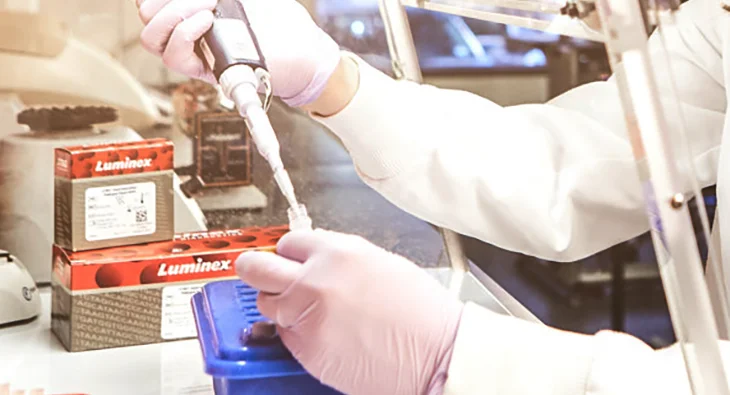How to Choose an Assay Development Platform
The Luminex Team knows assay development. Check out some tips from our experts below.
If you need to design a new assay, there are several factors you’ll want to consider before selecting the platform you’ll develop it on. Based on our experience, these are the most important:
Analyte of interest: Is your assay meant to detect DNA, proteins, or something else? While xMAP® Technology is flexible and allows you to detect a range of analytes, other platforms may be specific to certain sample types. Be sure to do your research before selecting the platform you’ll use for an assay.
Number of analytes: If you need a multiplex assay to detect several analytes at once, that may affect your assay optimization workflow. When sample volume is particularly low—such as with precious samples—a multiplex platform can help reduce the amount of sample required for the assay.
Sensitivity: If your target of interest requires high sensitivity, then this will have to be factored in as you design the assay. If possible, identify the relevant concentration range of your target in the matrix you are testing. This can be done by a quick literature search. Then, evaluate available technologies to best meet your specific assay needs.
Ease of use: This is a really important consideration for selecting an assay platform. How easy is it to use the instrument and to analyze the data it generates? Some platforms offer universal software to do the analysis, which might make life easier if your lab already has other instruments that also use that software. Be sure to match the platform to the skill set available.
Flexibility: Some platforms—like those offered by Luminex—offer an open-architecture design that can be configured to perform a wide variety of protein or nucleic acid assays quickly, cost-effectively, and accurately. Having the ability to build your own assays, or have an assay developer of your choosing build an assay, is key to the flexibility of your custom projects.
Reagent availability: It would be frustrating to develop your assay only to discover that you can’t run it because reagents are unavailable. Unfortunately, this is not uncommon. For some systems, reagents seem to be permanently on backorder. Check to make sure that all components of your assay are easy to acquire before you make your platform selection.
Software: If your assay will be under FDA review, then even the software you use has to be compliant. Consider a platform that offers 21 CFR Part 11-compliant software, and an instrument that is FDA-cleared.
Vendor support: You’ll want to ensure the platform you choose comes with strong technical support for both the instrument and the chemistry used in the assay. To determine this, look through online scientific forums such as those on ResearchGate, or contact authors who have published results from the platform you’re considering and ask about their experience with the vendor.
Community support: In addition to vendor support, it’s helpful to have robust literature to guide you in assay development. When you’re considering a platform, take a moment to find out whether there are sufficient publications that show validated assays. These will make a huge difference as you develop your own assay on that platform.
Resources
- xMAP® Cookbook to Design Your Own Assays [Download]
- Browse 1,200+ Partner Kits with xMAP® Kit Finder [Online Tool]
- Getting Started with xMAP® Technology [Video]
- View the latest xMAP® Insights Newsletter[Online & Download]


